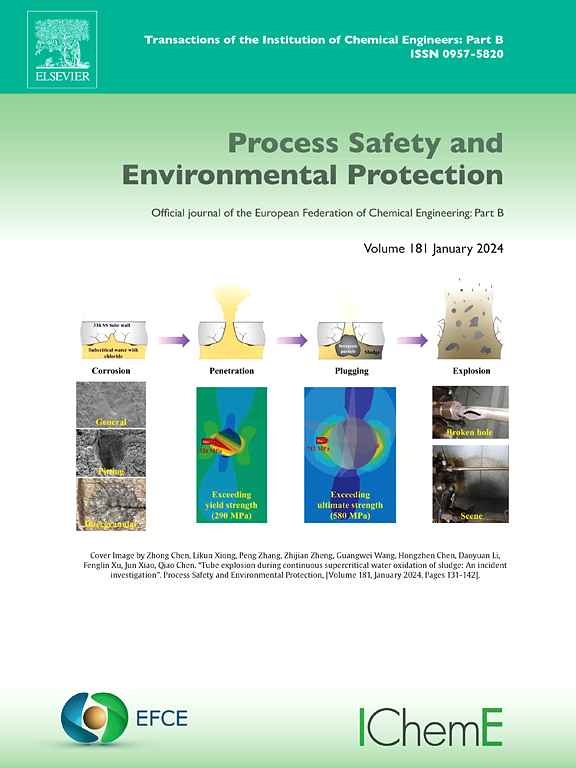Analyzing degradation pathways in the conversion of trichloroethylene to vinyl chloride: The role of S/Fe ratios
IF 6.9
2区 环境科学与生态学
Q1 ENGINEERING, CHEMICAL
引用次数: 0
Abstract
The long-standing contradiction between the mineralization of organic pollutants and the reduction of CO2 emissions has prompted the exploration of sustainable solutions. In this study, the concept of green sustainable restoration (GSR) was applied to the groundwater remediation of trichloroethylene (TCE). Sulfurized nano zero-valent iron (S-nZVI), with S/Fe ratios of 0.00088, 0.00880, 0.08800, separately, was applied as catalyst, to construct a peroxymonosulfate (PMS) based resource conversion system. The etching of nZVI with Na2S effectively enhanced the catalytic conversion of TCE. The rough spherical morphology, intact core-shell structure, and amorphous sulfide species were all observed. The S-nZVI/PMS system facilitated a non-free radical pathway dominated by 1O2, driven by endogenous Cl-, enabling the resource conversion of TCE into vinyl chloride (VC). This innovative approach highlighted the potential for achieving dual environmental benefits. Specifically, at S/Fe ratios of 0.00088 and 0.08800, PMS was converted to 1O2 through a one-step process. In contrast, at S/Fe ratio of 0.00880, the conversion involves a two-step process, where superoxide radicals (·O2-) served as intermediates, notably with amorphous sulfide species facilitating the transition. Importantly, our resource conversion system demonstrated resilience, being independent of both pH and temperature fluctuations. This research advanced our understanding of pollutant reduction pathways and underscored the potential for enhancing the synergistic performance of pollution control while concurrently mitigating CO2 emissions. By effectively regulating resource conversion pathways, this study laid the groundwork for innovative remediation strategies that aligned with sustainable environmental goals.
求助全文
约1分钟内获得全文
求助全文
来源期刊

Process Safety and Environmental Protection
环境科学-工程:化工
CiteScore
11.40
自引率
15.40%
发文量
929
审稿时长
8.0 months
期刊介绍:
The Process Safety and Environmental Protection (PSEP) journal is a leading international publication that focuses on the publication of high-quality, original research papers in the field of engineering, specifically those related to the safety of industrial processes and environmental protection. The journal encourages submissions that present new developments in safety and environmental aspects, particularly those that show how research findings can be applied in process engineering design and practice.
PSEP is particularly interested in research that brings fresh perspectives to established engineering principles, identifies unsolved problems, or suggests directions for future research. The journal also values contributions that push the boundaries of traditional engineering and welcomes multidisciplinary papers.
PSEP's articles are abstracted and indexed by a range of databases and services, which helps to ensure that the journal's research is accessible and recognized in the academic and professional communities. These databases include ANTE, Chemical Abstracts, Chemical Hazards in Industry, Current Contents, Elsevier Engineering Information database, Pascal Francis, Web of Science, Scopus, Engineering Information Database EnCompass LIT (Elsevier), and INSPEC. This wide coverage facilitates the dissemination of the journal's content to a global audience interested in process safety and environmental engineering.
 求助内容:
求助内容: 应助结果提醒方式:
应助结果提醒方式:


